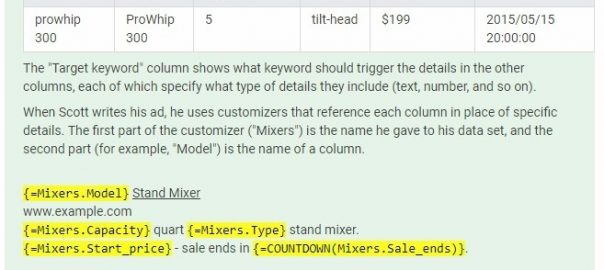— May 21, 2019
Getting clever with your RLSA strategies can have a significant effect on boosting your conversions. As we learned in our five ways to increase eCommerce traffic post, Google remarketing campaigns are a must for any eCommerce store. And your remarketing lists for search ads (RLSAs) are the vital component of these campaigns.
RLSAs enable you to create customized search campaigns that target previous online store traffic, based on their behavior while browsing your store. Being able to target searchers who already know your brand can have a dramatic effect on your conversion and click-through rates while lowering your CPCs – if they are tailored to your brand and optimized correctly, that is.
Before you get started with RLSA, here are some tech points and FYIs to ensure you are ready to build and implement your remarketing list strategies.
- List members have a maximum time limit of 540 days
- If you have someone in more than one remarketing list, Google will use the list with the higher bid
- To use RLSAs, your online store will need at least 1,000 active cookies
But the most important must-do before you get going on strategy testing is to know your audience. You will want to be familiar with your target shopper, your traffic and customer journey maps, and have planned out your sales funnel strategies. Once you know that, you’re ready to get started.
Newbie Tip: If you’re brand new to Google Ads, we suggest you start with our beginner’s guide to Google remarketing campaigns. You can find this and other newbie guides here.
Here are 11 RLSA strategies you can test to drive more conversions and improve your CTRs.
RLSA Strategy 1: Messaging Coordination
One of the most powerful ways to use RLSA is by creating campaign personalization. This means matching specific ad text to searchers based on the way they first interacted with or behaved on your online store. To do this, you would first create a remarketing tag for certain traffic behavior, and then add bid modifiers in your ad group to ensure the ad copy matches the behavior of the tag.
Let’s say a potential shopper visited your online store for the first time and viewed a specific product page or feature. You could create RLSAs that allow you to show more details about the benefits of that product or feature. Alternatively, you could use promotional ads that show discounted prices on the products they viewed.
A brand that has had great success with using RLSAs to tailor keywords, creatives and bids for individual users is Clarks – which was able to increase their conversion rates from 0.68% to 4.5%. Here is a video summary of the case study and how they used RLSAs to improve their business.
RLSA Strategy 2: Competitor Terms Bidding
There is nothing wrong with a little healthy competition – especially when it comes to remarketing campaigns. By using RLSAs to show ads – that include your competitors brand as keywords – to potential shoppers who already know your store, you can reap the rewards of their comparison shopping.
Pro Tip: Don’t forget to target your own brand name as well, and not only with your remarketing campaigns. This will help reach people searching for your brand after seeing an awareness campaign elsewhere. Additionally, this will help if your competitors are bidding on your brand name. You can read more about branded keywords in our full guide to branded keywords.
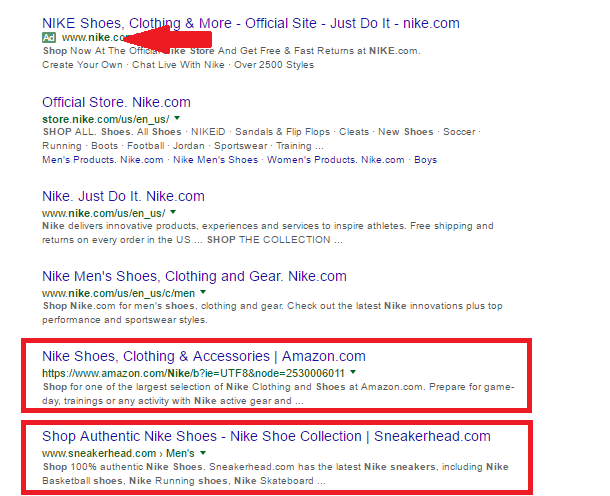
RLSA Strategy 3: Demographic Targeting
Demographic targeting is nothing new, but have you tried combining demographic targeting and remarketing? Let’s say you have a specific product that appeals to a particular gender or age demographic. You could then target previous visitors who match that demographic, with specific product or promotion search ads. Alternatively, if you have popular products that do well in certain locations, you can target previous store visitors from those specific locations with those specific products.
RLSA Strategy 4: Abandoned Cart Targeting for Shopping Campaigns
Using remarketing lists for search ads with Google Shopping campaigns can have awesome results. Why? Because they allow you to target shoppers already familiar with your brand and with higher buying intent, who are actively searching for what you’re selling.
However, it’s using this strategy based on cart abandonment behavior that could be really, really lucrative. This would mean using remarketing lists made up of traffic that abandoned a cart, with a specific product that you could add to a Shopping ad group with that and similar products.
Here’s Google’s step-by-step guide on how to add remarketing a list to your best-performing Google Shopping campaign ad groups.
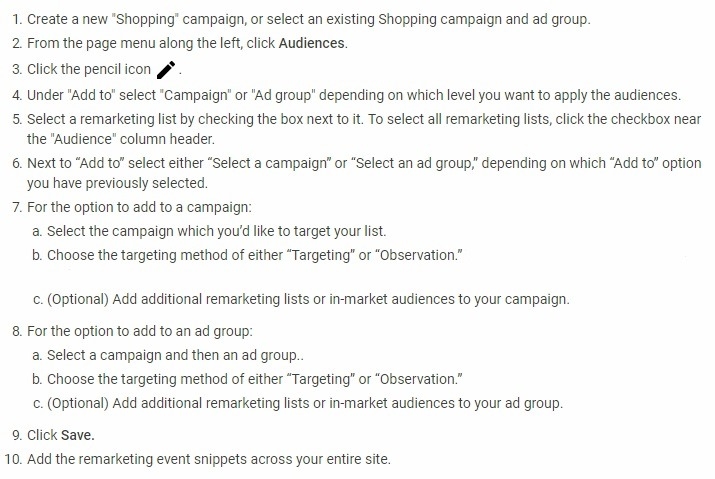
But it isn’t just abandoned cart campaigns you should be infusing with the power of RLSAs. When it comes to kicking conversion butt, Google Shopping is an eCommerce must. But it is by adding RLSAs that you can amplify your results. For example, Ulmart was able to increase their Shopping conversions by 13% without additional ad spend, by doing just that.
Layering your Shopping campaign product groups with RLSA enables you to target your campaigns without the need for segmented product grouping and negative keywords. This is because your remarketing lists themselves will serve as intent signals, showing specific products with high buying intent.
RLSA Strategy 5: Combining RLSAs and DSAs
Another must-have Google campaign type for eCommerce are DSAs (Dynamic Search Ads). By using RLSAs for your Dynamic ads, you’re are able to use the power of DSAs for remarketing campaigns. This can be highly effective, with one case study showing a nearly 1,000% increase in ROIs, conversions and CTRs when this strategy was used.
Newbie Tip: If you’re not familiar with Dynamic Search Ads, these are search campaigns that match content on your site to what a user is actually querying. You will want to start with one ad group (that includes RLSA of all site visitors) which targets all site content, to cast a broader net. This will not only bring in more targeted traffic but help gather data on possible keyword and customer flow behavior that you can then use for more defined campaigns. Visit our Dynamic Search Ads (DSA) Guide for more details.
This RLSA strategy allows you to target potential shoppers who not only know your brand but are actually looking for products you’re selling.
RLSA Strategy 6: Pairing Remarketing Lists and Broad Terms
Broad terms with high competition can be costly in traditional search ads. However, when combined with RLSAs you have the power of remarketing previous traffic in your corner, thus improving ROI potential. There are two main ways you can try this strategy:
Beginner Strategy
Create a broad match campaign, starting with lower bids, increasing your big modifiers as your site gets more traffic.
Pro Strategy
Clone your exact match campaigns, converting to broad match type, and add RLSA targeting.
Unlike traditional broad match campaigns, integrating RLSAs allows you to reach potential shoppers who not only know your brand but have more intent.
RLSA Strategy 7: Segment Bids Based on Sales Funnel Stages
Another good RLSA tactic is to tailor your remarketing campaigns to specific buying stages in your funnel. This strategy involves increasing your bid modifiers the closer a potential shopper is to converting. You can do this by creating different campaigns at different stages and then increasing bids for those users who have visited your store multiple times or for more extended periods – as these shoppers have higher conversion intent.
Here’s an example of how you could set up these campaigns using Google bid adjustments:
1. Hot Audience: Ready to Convert
Visited your store more than three times
Increase bid by 20%
2. Medium Audience: Considering Your Brand
Spent over 90 seconds on a product page
Increase bid by 15%
3. Cooler Audience: Visited Your Store for the First Time
New site sessions
Increase bid by 10%
Newbie Tip: Want to know how else you can use bid adjustments and how to create them? This guide will take you through it step by step.
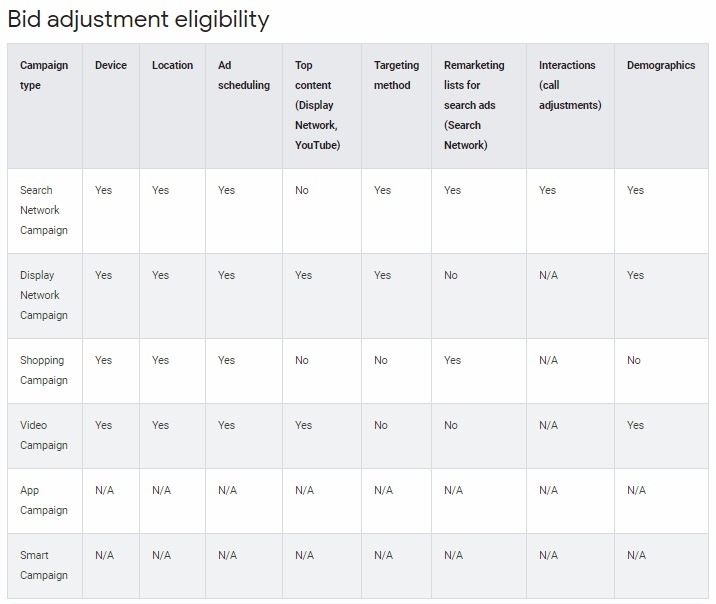
RLSA Strategy 8: Supplement Your Low Impression Volume With Cheap Social Traffic
By exclusively showing your search ads to those searchers who have a retargeting cookie through ‘target and bid,’ you are ensuring your clicks are highly targeted. The drawback of excluding all other non-cookie traffic is that your impressions will be lower. This is where social awareness campaigns can be a substantial cross-channel asset. Take advantage of low-cost Facebook and Instagram awareness campaigns to bring in first-time traffic, which you can then retarget using a variety of RLSA-integrated Google ads. For more on how to create a highly converting cross-channel strategy, visit our Google and Facebook combined strategy guide.
RLSA Strategy 9: Implement Negative Bid Modifiers or Exclusions to Avoid Wasted Spend
Just because you’re targeting previous site visitors who know what you are selling, doesn’t mean you should forget your Google Ads simplest, but most beneficial campaign elements: negative bid modifiers and keywords.
Negative bid modifiers exclude traffic based on a number of factors including devices, scheduling, and location variants. They can help you refine your targeting and segment your campaign for more targeted remarketing and reduce unnecessary spend.
For example, you could possibly exclude or negative-bid traffic that spends very little time on your store before bouncing off your site, as these users would have low conversion potential. Another way you could use this strategy could be to exclude traffic that has already converted, which you would then push into campaigns designed especially for previous and repeat customers.
Pro Tip: To ensure your RLSA campaigns aren’t competing for your traditional search campaigns, you should create and add negative remarketing lists to your regular campaigns. This will ensure you’re not leaving it up to Google to decide which of the two ads to show.
RLSA Strategy 10: Using RLSAs to Build LTV
LTV (Customer Lifetime Value) is a crucial eCommerce KPI. Therefore, your Google remarketing strategies shouldn’t just be focused on those shoppers who are about to convert. By targeting people who have specifically visited your thank-you pages (therefore converted), you can increase your return rates. Or they could be used to up- or cross-sell other products to customers who have just purchased from you. Ultimately, to use this strategy, you would combine Customer Match (email lists) and cookied purchasers (based on thank-you page visits) and then break them down into smaller segments.
Here are some examples of segments you could test with this strategy:
- Target hot customers who just bought and you could up- or cross-sell
- Add warm customers, who purchased from your store in the last 180 days, to specific product promotions
- Retarget colder customers who bought once outside the 180-day window
RLSA Strategy 11: Merge Ad Customizers and RLSAs for More Targeted Messaging
Another way to ensure you are personalizing your Google remarketing campaigns to increase results and maximize your budgets is by leveraging ad customizers.
Newbie Tip: Ad customizers allow for dynamic ad copy changes based on location, device, prices and promotional specifics. This enables you to reach potential shoppers with hyper-specialized search ads. You can read more about ad customizers here.
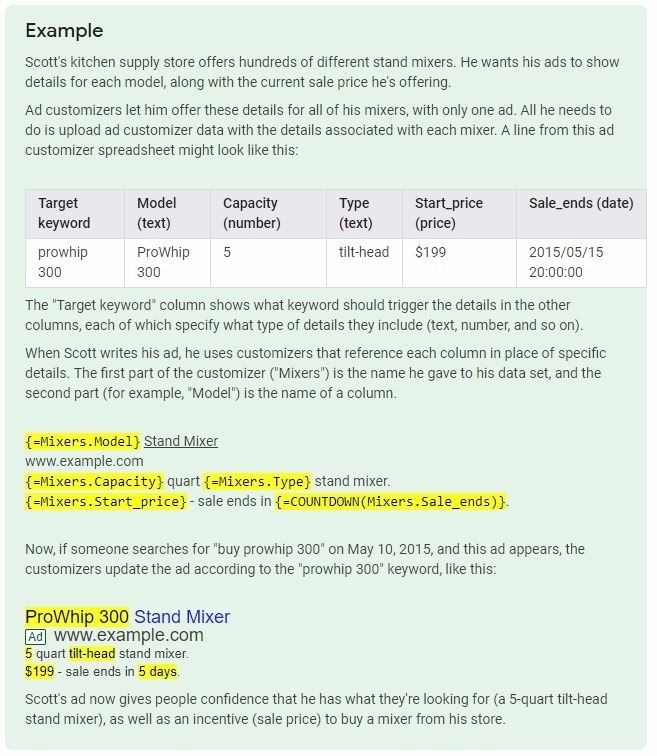
This tactic will enable you to create remarketing campaigns with ads specifically targeting different audiences depending on their behavior. For instance, you could create different messaging for remarketing campaigns that are unique to checkout abandoners or those who have bought from you before. Therefore, giving you the ability to tailor your ad copy to highlight different aspects more likely to convert those segments.
Conclusion: Mine Your RLSA Campaigns for Invaluable Data
Last, but by no means least, you want to mine your RLSA data for more RLSA strategies to test. Strategies that will be unique to your brand, your products and your market. This is particularly important if you’re a newer store that is just beginning with RLSAs, where you will want to run broader remarketing campaigns before you drill down segments by leveraging bid modifiers and other strategies mentioned here.
Regardless of whether you’re starting out or have been using RLSAs effectively for some time, the data you can gather from these campaigns is invaluable for not only optimizing your retargeting but integrating to your other campaign types.
Have questions about optimizing your Google remarketing campaigns? Post them in the comments below; our Google Ads gurus are standing by to assist.
Digital & Social Articles on Business 2 Community
(60)
